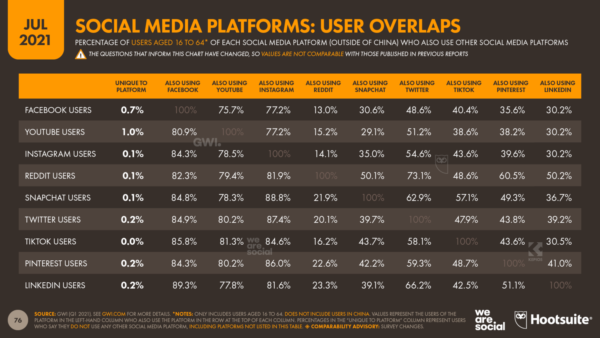Many social media platforms were created to network with colleagues and old friends. But as time passed by, brands started infiltrating these platforms because of their high potential. True enough, to date, more social media platforms rise, and the pioneers of social media are also evolving more than ever.
Social media marketing hasn’t been around for a very long time. In fact, Facebook was only founded in 2004, Twitter in 2006, Instagram in 2010, and Tiktok in 2016. It was also only in 2010 that Facebook started offering ads services for brands to target specific audiences.
Aside from making sure consumers enjoy their platform features, they need to make sure they are innovative and can monetize their huge user base to grow the company. After all, these platforms are still a business after all. So to further monetize the growing number of active users, changes are constantly made in their algorithm, policies, and operations. For example, the average reach of an organic post on Facebook in 2019 is 7.7%. By 2018 it’s 5.5%, and at the end of 2020 it reduced to 5.2%. Because of this decline, brands everywhere are compelled to spend on paid advertisements to reach their target audience or they may cease to exist digitally.
But, it's not about being everywhere if you are a brand. Yes, there are benefits to being on every platform you can find. But doing so also thins out your resources and demands you to focus on quantity instead of quality. You'll need to ideate content for each and make sure they maximize platform features. You'll also need to manage and moderate each, build a community or following, and spend more time and resources if you plan to do advertising.
You don’t have to be on every social media platform
DataReportal’s July 2021 report show that many users across the top social media platforms have an overlapping user base.

The key takeaway is that businesses don’t need to be on each and every platform in order to reach the majority of their audience. Even though the reach isn’t the only factor to consider in your social media marketing plan, it influences how you construct your strategy as it will influence how you currently operate.
But, keep in mind that different people will use different platforms because each of these applications have different features, selling point, and demographic it caters to. So instead of thinking about how your business can be everywhere, think about what platforms will work best for your target audience and business goals and focus on those.
Best practices you can implement to maximize platform value for your business
You can start exerting effort into making the platforms work for you. Despite changes in algorithms and how these platforms operate, you can start doing the following to thrive in the industry you are in, without spreading all of your marketing and advertising resources too thin across many different things.
Create targeted ads
Nothing beats the reach of ads compared to organic posts. But aside from that, creating targeted ads ensures that your business is being seen by people who have already shown hints of interest through their online behavior.
Use more of certain content formats
Some formats are prioritized more than the others when reaching your target audience for organic posts. For example, Facebook shows less of images and more of videos, and more of posts on groups than of brand pages on each user’s news feed. Some ideas are also best explained using a specific format, and the uniqueness of each platform makes it all the more dynamic and effective for the users you are targeting.
Focus on quality over quantity
No matter how much you spam your accounts with content, if they don’t give value, no one is going to engage, share, or convert. Posting too much content may turn off your audience and may result to them unfollowing your account. It can also trigger the platforms to tag you as spam if your content becomes clutter.
Create and curate based on the platform
When you need to post an asset, make sure you create or curate them while keeping in mind how the platform is being used. For example, even if you want to use the same idea across more than one social media account, make sure you resize and recompose your visuals to fit how it is published on the tool. Your visuals should preview nicely on the thumbnail, and you maximize app features to get your content the attention it deserves.
Maintain professional accounts
Keep all your social media accounts professional. No broken links. No plagiarized content. No bad visuals. Your tone is consistent, your messaging is clear, your values reflect your work, and how you and your employees present themselves especially when speaking on behalf of the company should be unified and professional. Everything should be thought through so when customers visit your account, they know where to find what and won't be driven away.
Leverage each platform’s strength
Each social media platform has a different selling point. Depending on your business, you must use it to your advantage to showcase your products or services in the best light. If you want to utilize user-generated content (UGCs), then soliciting it from Facebook, Twitter, and Instagram is easier and doing so in Youtube can be more challenging.








